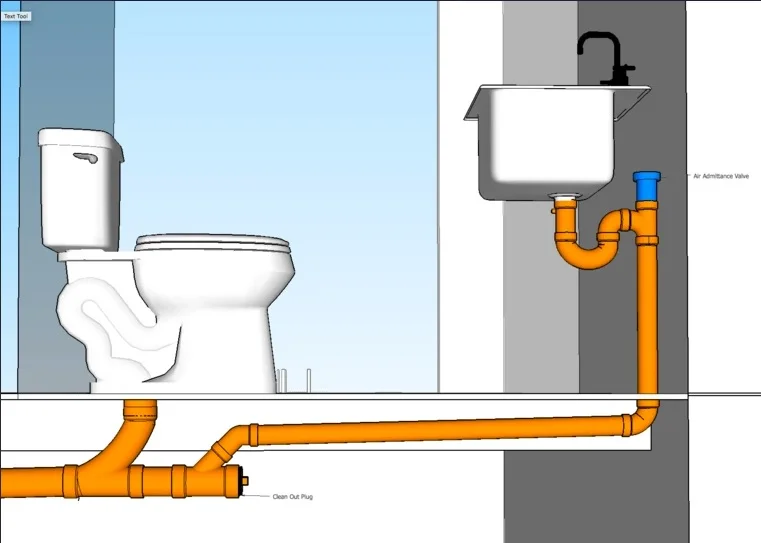Achieving a clean and dust-free bathroom is more than a dream; it can easily be your reality with the right approach. By understanding the dust sources, such as moisture and poor ventilation, you can take proactive measures to combat it effectively. Implementing regular cleaning routines will help reduce dust accumulation. Simple strategies like microfiber cloths or keeping windows open for fresh air can make a significant difference. When tackling existing dust, remember that natural solutions are effective and safe for your home environment.
A mix of vinegar and water can work wonders on surfaces without introducing harsh chemicals. Regular maintenance plays a crucial role in preventing future build-up as well. Consistently checking areas prone to collecting dust ensures that cleanliness becomes part of your routine rather than an occasional task. With these manageable steps, transforming your bathroom into a sanctuary free from dust is entirely within reach. Taking action today means enjoying a fresher space tomorrow.
Understanding the problem of dust in the bathroom

Dust in the bathroom is often overlooked, yet it can significantly impact air quality and hygiene. This accumulation is more than just an aesthetic issue; it can harbor allergens that affect your health. Bathrooms are unique environments. High humidity from showers creates a perfect breeding ground for mold and mildew, which can contribute to dust formation. Tiny particles get released into the air when you use towels or toiletries. Bathrooms frequently have limited airflow compared to other rooms in the house. This stagnant air allows dust to settle rather than disperse. Even small actions like opening a window or using an exhaust fan can help mitigate this problem. Understanding these factors is crucial for developing effective cleaning strategies tailored to your bathroom’s challenges.
The common causes of dust in bathrooms
Dust in bathrooms often stems from a few key sources. First, the most common culprit is human activity. When you enter and exit, skin cells or hair particles can accumulate. Another significant factor is air circulation. Bathrooms usually have less airflow than other rooms, allowing dust to settle more easily on surfaces. Humidity plays a role as well. Damp environments encourage mold and mildew growth alongside dust accumulation. If your bathroom shares space with other areas of the home, dust from those rooms can travel through doorways or vents and settle in yours, too. Understanding these causes makes tackling bathroom dust much easier.
Prevention tips to keep dust away
To keep dust at bay in your bathroom:
Start with regular cleaning.
Wipe surfaces weekly to prevent accumulation.
Use microfiber cloths; they trap dust effectively.
Use minimizing clutter. Fewer items mean fewer places for dust to settle, store toiletries and other essentials in cabinets or baskets with lids. Ventilation is crucial, too. Open windows when weather permits, and use exhaust fans during showers to reduce moisture that attracts dust particles. Choose easy-to-clean materials for decor and storage solutions. Smooth surfaces can be wiped down quickly without much effort. Invest in air purifiers designed for small spaces if you’re struggling with airborne dust particles. They can make a noticeable difference in air quality while ensuring a fresher atmosphere.
Step-by-step guide on how to get rid of dust in the bathroom

Start by gathering your cleaning supplies. You’ll need microfiber cloths, a vacuum with a brush attachment, and an all-purpose cleaner. Begin at the top. Dust tends to settle on higher surfaces first. Use the microfiber cloth to wipe down light fixtures and shelves. Next, tackle mirrors and tiles. Spray your chosen cleaner on these surfaces and wipe them clean for a sparkling finish. Move to bathroom furniture like cabinets or storage units. A quick dusting will keep these areas looking fresh. Vacuum the floor thoroughly, paying attention to edges where dust collects easily. If you have rugs or mats, shake them out as well. With this step-by-step process in mind, keeping your bathroom dust-free becomes more manageable!
Natural cleaning solutions for a dust-free bathroom

One of the best options is a simple white vinegar and water mixture. This solution not only cuts through grime but also helps neutralize odors. Add a few drops of essential oils like tea tree or lavender for an extra kick. These oils have antibacterial properties that freshen up your space while providing a pleasant scent. Baking soda is another powerhouse ingredient. Sprinkle it on surfaces before wiping it down with a damp cloth to capture dust particles effectively. Pay attention to microfiber cloths; they attract dust without the need for chemical sprays. Use them regularly on shelves, light fixtures, and countertops to keep those surfaces spotless. When keeping your bathroom dust-free, natural cleaning solutions are effective and eco-friendly. A blend of these natural ingredients will help maintain freshness while reducing harmful chemicals in your home environment.
Maintenance tips to avoid future build-up of dust
Regularly cleaning your bathroom is essential. Schedule a weekly routine to dust surfaces and wipe down tiles. This keeps dust from accumulating. Use using microfiber cloths, as they trap particles effectively. Avoid feather dusters, they can spread dust around rather than remove it. Ventilation is crucial in minimizing moisture and mold, which attract dust. Open windows or run an exhaust fan during showers to maintain airflow. Decluttering helps, too. Keep countertops clear of unnecessary items that collect dust easily. Store toiletries and beauty products in cabinets whenever possible. Ponder investing in air purifiers with HEPA filters for added protection against airborne particles. They work wonders by continuously filtering out allergens and fine dust throughout the day.




